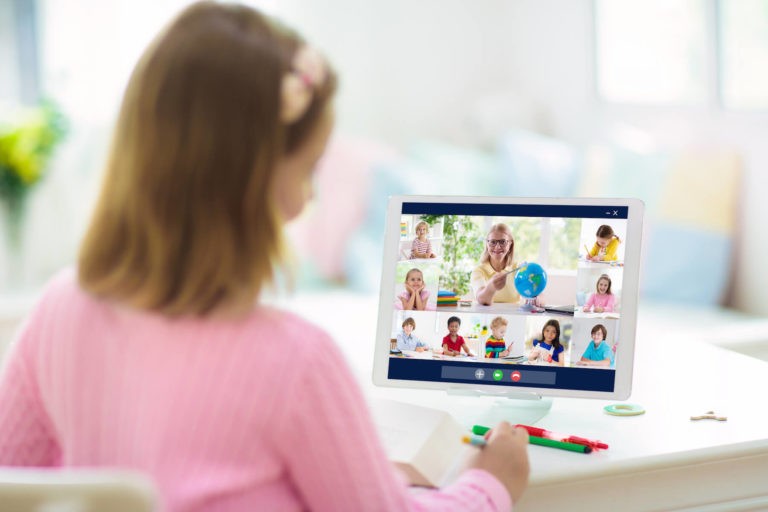Why is it Important to Establish Expectations for Students?
We all know that online learning can be productive and successful. However, as educators, we prefer face-to-face instruction with our students. Anyone who is currently or has previously been a teacher would never say that they would prefer to teach their students via a computer platform. However, in the current day and time we are in, distance remote learning might be our only option at any given time and we have to be able to adapt to it.
It is incredibly important to establish expectations for students when the online learning process begins. If you do not, you are setting yourself and your students up for failure. Students need to understand that when they cannot be in the classroom, online learning is just as important. We have to teach them how to become responsible, independent learners so they can take ownership of their learning and where they are as learners.
If they do not know how to make the most out of the opportunity of online learning, they will not meet the expectations and will fall behind. If we are transparent with students about why we need to establish expectations, hopefully they will be understanding and willing to contribute to those expectations and follow them. This will establish a healthy and safe space for learning to take place when in-person learning cannot occur.
How do Student Expectations for Online Instruction Differ?
Traditional instructional and classroom expectations are what we are accustomed to. Online expectations definitely differ because the platform is completely different. However, there are some commonalities.
First, we need to discuss with and teach students about respect for the teacher as well as each other. If everyone is trying to speak at the same time, or someone tries to speak over and interrupt the teacher, no one can learn. Another commonality is completion of work. Students must be expected to participate in discussions, formative assessments, and assignments given between Zoom (Google Meet, Microsoft Teams, etc.) sessions. As teachers, if students are not giving us their work or telling us what they are thinking, we do not know if they are learning the skills and standards we are teaching.
I also see another commonality in small group instruction. This is where teachers “get the most bang for their buck.” The online platforms can be used to meet with small groups, not just the entire class. Within small groups, we should also establish expectations for students so they can get the individual attention that they need to be successful. So, even though the platform is different and expectations will look and feel different, the underlying theme is that students should know what to do and what to expect from their teacher and what their teacher expects from them. Clear communication about these expectations will set the tone for the quality and quantity of online instruction, whether it is for a day, a week, a month, or longer.
Strategies for Establishing Student Expectations
I think it is crucial to begin with a conversation with students about what they think should be the expectations for a virtual classroom platform, just as you would a physical classroom. You, as the teacher, can guide and steer the conversation, but if they feel that their opinions and voices are heard and valued, they are more likely to follow the expectations that are decided on collectively. The teacher can even make a class document outlining the discussion and create a final product that she reviews at the beginning of every online lesson to remind everyone of agreed upon expectations.
Online Etiquette
Have a conversation with students about raising their hand, or other agreed upon hand signal if they have something to say. You should also discuss with students what it would not be appropriate to discuss online, such as having to go to the restroom. Teach them to stop their video feed and just go and start it back upon returning. They should also learn to mute and unmute when speaking so that everyone can hear the teacher or speaker. An easy way to start this is to mute everyone from the beginning until you establish this practice.
Participation
Students should also be guided to discuss why it is important to participate in “class discussions” or answering questions during an online lesson. Students need to understand that discussion and responding is just as important online as it is in person. This helps the teacher know what they understand and what they need help with. Students can also learn how to use the chat feature to answer questions by typing their response—even privately to the teacher if they are nervous about getting something wrong in front of their classmates.
Completion of Work
It should be established that students need to complete their assignments—whether it is during the time with their teacher or afterwards and turn it in via email, Google Classroom, SeeSaw, etc. Again, this helps guide the teacher to make sure students understand the material being taught.
Teachers should be responsive to work that is turned in by giving students feedback on what they did well and what they need to work on. They should also let them know that they are there to help them with anything they might be struggling with and even offer individual times for students to sign up for personalized instruction.
We have to make the most out of online instruction to ensure our students are learning, whether we can be with them in the classroom or virtually. Hopefully some of these ideas on expectations will assist you as you plan for online learning.




